Ron Johnson explores the country for trail running’s hidden gems.
Everybody has a secret spot. That beauty of a trail that has it. The “it”
is always subjective. It could be the steepness that defies gravity, the soft forest floor underfoot that feels like you’re running on air, the epic views or your craft brewery that sits waiting at the end of the trail. Often, it’s the solitude. We cherish time with our fellow bipeds on race days, and training with clubs, but on long runs in the woods, it’s nice to imagine just us alone in the wilderness. So, we’re not always quick to divulge the coordinates of our fave runs to just anyone. Luckily, we convinced a gaggle of the country’s in-the-know trail runners to let us into their worlds for a brief moment. Enjoy, be inspired, and please share your own fave local trails on social media after reading this issue with the hashtag #irunsecretspots. Explore.
NAME: Nick Elson
PROVINCE: British Columbia
THE SKINNY: National men’s mountain running champion Nick Elson moved to Squamish, B.C. to pursue climb- ing, but eventually returned to running. Instead of roping
it up the sheer granite face of the famed local landmark The Chief, he spends many days scampering about on the other side of the mountain lapping tourists on the hiking trails.
“The trails on the Chief tend to be quite steep — in fact on most of my ‘runs’ I do a fair bit of hiking going up. In the forest, the terrain is characterized by lots of roots and rocks. Below the summits, the forest gives way to open granite slabs. The standard trails are very popular with hikers but there are a number of more obscure trails that make it pos- sible to avoid the crowds. I often run on Slhanay. A peak connected to the Chief that is much quieter.”
THE SCOOP: In addition to living large on The Chief, some of Elson’s other favourite areas include “Crumpit Woods, Alice Lake, and the area above Quest University.” Elson also recommends local restaurants “Mags 99 (Mexican), Essence of India, and Oryzae and Sushi Sen. Capra Run- ning is a great local trail running store.”
NAME: Mario Srinik
PROVINCE: Alberta
THE SKINNY: Mario Srinik is a Calgary-based outdoor adventure athlete who made the move from rock climbing to trail running and found his Mecca in Kananaskis Country about 40 minutes outside the city: namely Moose Mountain.
“There are ways around it that people don’t usually run, different approaches. The way I really enjoy running it, you start at Ings Mine and run up to the ice caves. It’s a short hike and there is a big cave, and even in the summer you can find icicles. If you have a headlamp you can wander pretty far in that cave. At this point, most people turn around and go back, but I go up to the ridge, which is roughly a 600-me- tre vertical climb over the scree. From the ridge there is an open plateau and Moose Mountain is across the valley on the other side. Most people do the Moose Mountain trail out and back, or up to Ings Mine and back to the car, but you can connect them into one big loop and it’s 28-30K with about 900 metres of vertical. It’s a very alpine feeling being only 40 minutes from Calgary.”
THE SCOOP: In Calgary, Srinik runs his own personal Tour de Calgary, an 80K loop around the city utilizing bike pathways and trails along the Bow River. In other words, get creative. His go-to for a post-run snack is Cafe Rosso.
NAME: Karon Mathies
PROVINCE: Saskatchewan
THE SKINNY: When Saskatoon native Karon Mathies turned 60 she decided to run a 100-mile ultra and succeeded. This was promptly followed by her first race, the Lost Souls Ultra and she hasn’t looked back. Her favourite running spot is tucked along the beautiful South Saskatchewan River. “We in Saskatchewan are known as flatlanders because we can see forever with no apparent hills in sight but looks are deceiving. When I go for a run I like the lower trails of the Meewasin Valley. These run all along the South Saskatchewan River but can’t be seen from any main road. They are tucked away with single track, trees on both sides and relentless roller- coaster hills. I love how I can get away without having to leave the city.”
THE SCOOP: “Around the city less within an hour’s drive we also have Cranberry Flats which offers single track trails with a beautiful view of the river and Black Strap Provincial Park. One of my favorite places to eat or relax after a run is D’lish. Her soups are a must have.”
NAME: Blair Mann
PROVINCE: New Brunswick
THE SKINNY: 42-year-old Blair Mann is a software engi- neer and family man in Moncton who raced his first 50K in 2011 and hasn’t looked back. Although it took a few times to actual locate the mythic trails of Halls Creek, once there, it was worth the wait. “Originally, I had heard that it was only a few kilometers of biking trails. As a result, I didn’t bother checking it out. At some point, curiosity got the best of me. Wow! Stunning single track for miles along side a flowing creek, beautiful ferns and just about every type of landscape you could hope for: rocks, roots, steep climbs, flowing creeks, runnable sections, bridges, board- walks. The beauty and seclusion would fool you into think- ing you were in a remote, protected land reserve when in reality you are in the middle of the city.”
THE SCOOP: In addition to Halls Creek, Mann recommends the Northwest Trail and Riverfont Trail (Moncton, River- view, Dieppe). “This is the primarily rail trail (gravel bike trail) that runs throughout Moncton along the Petitcodiac River as well as the surrounding towns of Riverview and Dieppe. Its flat and great for long hours of turnover.”
When it comes time to rest the dogs, it’s Cafe Codiac, “locally roasted organic coffee,” as well as the Tide & Boar Gastropub. “Heck, they even brew their own beer!”

NAME: Dwayne Sandall
PROVINCE: Manitoba
THE SKINNY: Dwayne Sandall ran his first marathon in 2002 and has been running ultras for the past dozen years. He also works as a race director, which means he’s always on the lookout for primo trails. He stumbled upon 440- acre Pembina Valley Provincial Park near the sleepy town of Carman, in the southern end of the province just before the American border, by looking over maps of provincial parks. He put his trail dog in the car and drove 90 minutes out of town to have a look. “It’s a beautiful park with a fairly short trail network of maybe five trails, the longest only seven kilometres, but you can loop around for a nice long run. For Manitoba, it’s a place where you can get a lot of good vertical and a wide variety of terrain from wide trails to singletrack. It’s a really quiet place, literally a hid- den spot.”
THE SCOOP: In Winnipeg, Sandall’s go-to trail running spot is Birch Hill Park preceded by a trip to Parlour Cof- fee in the town’s French Quarter. He also recommends Pizzeria Gusto for pre-race carb-loading or an indulgence after a long day on the trails.
NAME: Shawn McCardle
PROVINCE: Prince Edward Island
THE SKINNY: PEI trail runner, cabinetmaker and race orga- nizer Shawn McCardle lives in the rural farming commu- nity of Lady Fane. He doesn’t have to travel too far to his favourite local running spot. It’s out his backdoor. “I can run along the edges of some fields, eventually getting to a provincial forestry woodlot which has trails cut through it. It is about a 10K out and back run. I am probably the only person who runs there and rarely do I see motorized ve- hicles. What I do see is lots of wildlife: foxes, coyotes, and regularly a great horned owl, even during daytime runs. On a clear day, I can see the Confederation Bridge 20K away. Another favourite spot is the Brookvale Provincial Ski Park.”
THE SKINNY: For visitors, McCardle recommends the Bar- none Brewery, a local craft establishment in a converted barn. “On a Thursday night, you can get your growler filled, and go up to the loft and listen to live music.”
NAME: Denise McHale
PROVINCE: Yukon
THE SKINNY: Adventure racing, ultra marathoning super couple Denise McHale and her husband Greg first visited the Yukon in 1996, and relocated from Ontario per- manently in 1998. They settled in the 300-strong town of Carcross near White- horse where they operate a tourism business, along with a coffee shop and bar. Although their little slice of the Yukon is developing a reputation for world-class mountain biking, their favourite trail running spot is located in Whitehorse. “Miles Canyon is this very scenic canyon in Whitehorse. You can run maybe a half-mile into it and you come to this bridge across a massive canyon (with the Yukon River below). You can run along the ridgeline there for a while, and then you get into the forest and it’s not super technical, but offers a little bit of everything.”
THE SCOOP: According to McHale, in Whitehorse, outdoor-loving insiders fre- quent the Midnight Sun Coffee Roasters, “it’s a coffee shop right inside a bike shop,” says McHale, currently gearing up for a new local race, the 50-mile ultra Reckless Raven.
NAME: Jodi Isenor
PROVINCE: Nova Scotia
THE SKINNY: Jodi Isenor, race director of the Salomon Sonofa Gunofa run, de- scribes himself as a “map geek,” who works as a survey tech for the province in St. Margaret’s Bay, Nova Scotia. He says the main rail pathway in St. Margaret’s Bay is a well-trampled fitness thoroughfare, but there are numerous secret paths that spindle off the main trail that are a dirt runner’s dream.
“Most people run past them every day, but they don’t see them since they’re not signed. The only people we see on these trails are our running friends. Most of the trails are quite steep (think black diamond ski run steep) which also deters a lot of folks. A memorable moment was finding that first little trail up Dauphinee Mountain.”
THE SCOOP: Although he loves his home turf, Isenor also recommends the gor- geous trails of Pollett’s Cove in nearby Cape Breton Island and basically every trail in the Wentworth Valley. In St. Margaret’s Bay, his go-to caffeine provider is the Bike & Bean Cafe, and Lefty’s Pub in Tantallon for post-race festivities. “It’s basically initiation!”
NAME: Caroline McIlroy
PROVINCE: Newfoundland and Labrador
THE SKINNY: Trail runner Caroline McIlroy of St. Philip’s, Newfoundland cannot get enough of her beloved East Coast Trail—a massive footpath of more than 300 kilome- tres. And with three adult children who love to get active, she is never short of company. It’s no surprise that her fa- vourite event is the East Coast Trail Ultra Marathon and her fave spot is the Sprout Trail. “Starting from Petty Har- bour you run along the sea shore accompanied by crash- ing waves. There are often seals in the ocean and further on, you run along precipitous cliffs. There are towering sea stacks, one of which with a bald eagle’s nest on it. The trail continues along the cliffs to a lighthouse from which you frequently sea humpback and minke whales in the summer. The trail turns into a bay and ends at Bay Bulls. During the spring you can sea icebergs all along the trail. It’s a wonder- ful piece of wilderness only 15 minutes from St John’s.” THE SCOOP: Around St. Philip’s, McIlroy spends her lunch- time running the trail up to the top of Signal Hill. For post-race fixin’s, McIlroy recommends the Inn of Olde, a quirky old pub in the town of Quidi Vidi, as well as Chafe’s Landing in Petty Harbour. “Petty Harbour means great fresh fish. I go there with my children after an evening run out from Petty Harbour to Motion Head.”
NAME: Jennifer Coleman
PROVINCE: Ontario
THE SKINNY: Jennifer Coleman likes the Bruce Trail. So much so, that her and her “trail sister” Gemma Kitchen are planning on running the length of the massive Ontario route this year. Coleman, also the founder of the 250-member Burly Trail Runners club, explores the fertile trail network along the Niagara Escarpment in the Hamilton area. “My (not so) secret spot is in the Dundas Peak, Tews Falls, Spen- cer Gorge and Christie Lake area. It is unbelievably scenic with panoramic views of Hamilton and Dundas and not one but two beautiful waterfalls—Hamilton is the city of waterfalls. To visit all the areas is about a 20K loop. From the top of Dundas Peak you can also take a side trail down the steep escarpment to the main Bruce trail. The trail possibilities are endless!”
THE SCOOP: “My trail running crew tends to frequent the Smokey Hollow Con- servation area in Waterdown. Lots of hills, technical rocky sections and even a beautiful waterfall right at the start parking area (free parking! win win!). We enjoy having post run food and drinks at the American House Bar and Grill and also in town is the Copper Kettle. They’re well known for their yummy apple fritters made fresh in house!”
NAME: Sebastien Cote
PROVINCE: Quebec
THE SKINNY: Sebastien Cote started trail running as a way to put a new spin on his old hiking haunts across Quebec, including his first race in the Eastern Townships. Wanting to help a friend of his with Multiple Sclerosis, he put two and two together and decided to organize his own race for the cause, Ultra-Trail Harricana, which has turned into one of the top races on the planet. His secret trail running gem is located an hour north of Montreal. “There is not-for-profit organisation named ‘Comité régional pour la protection des falaises’ (CRPF) that buys up land in the Laurentides region of Quebec to protect the land from development and develop other parts for recreation. In the town of Prevost, there’s a 10K loop that I love for training. It’s very technical with some good drops and each 10K loop gives you about 400m of vertical elevation gain. Lots of fauna including frogs, beavers, birds of prey.”
THE SCOOP: In Montreal, Cote can be found at least twice a week running in his go-to park Mont Royal, which he calls “a trail-running haven in the downtown core of a great city where I’ve seen owls, fox, raccoons and plenty of trees and flow- ers, combined with some awesome views.“ He recommends local farmer’s market Marche Maisonneuve and at the Hochecafe (“I am a huge latte addict”).


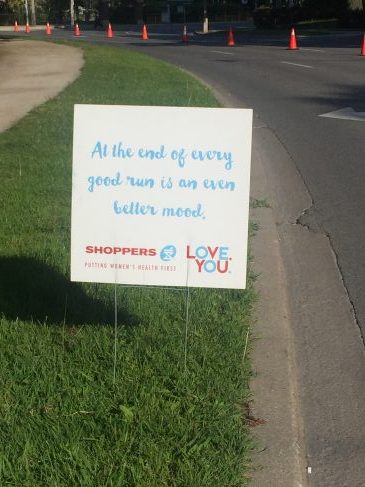


















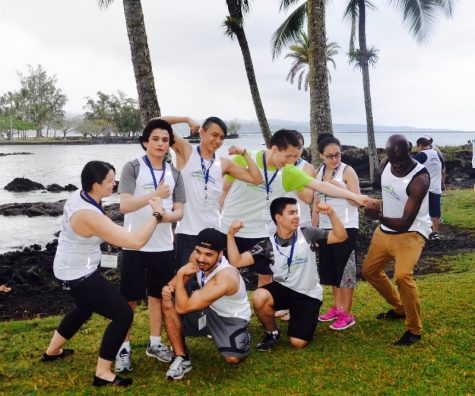
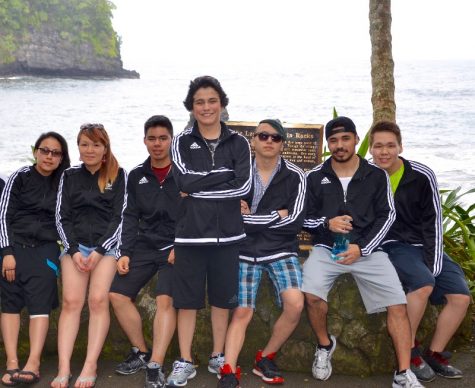



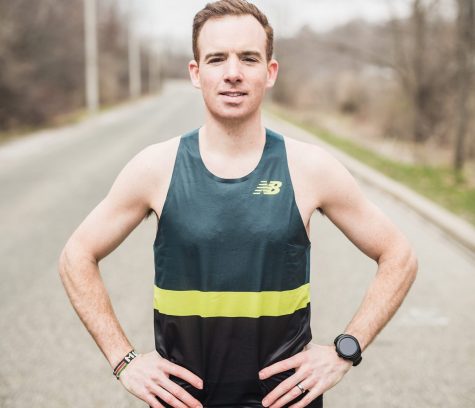

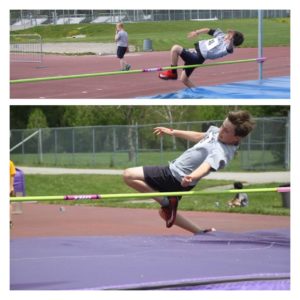


 Our Magazine
Our Magazine
